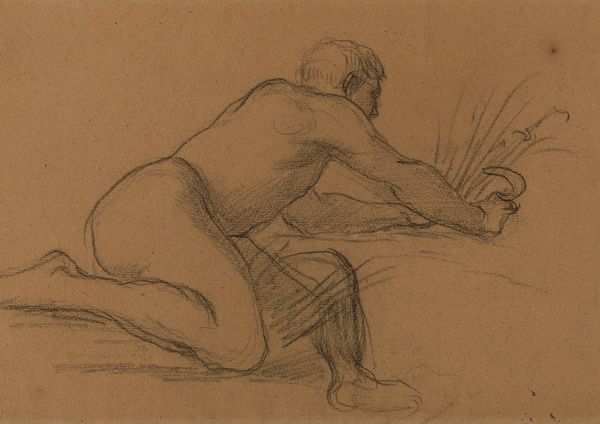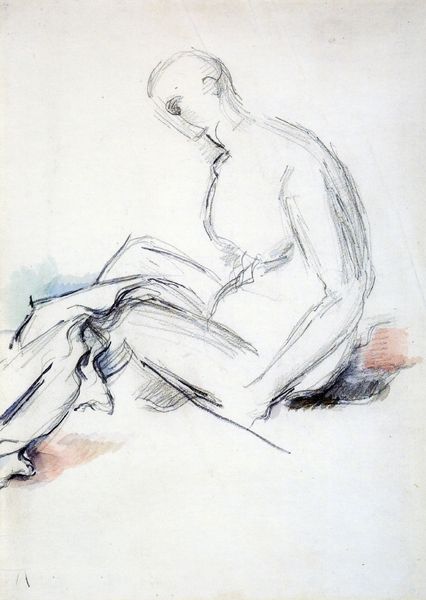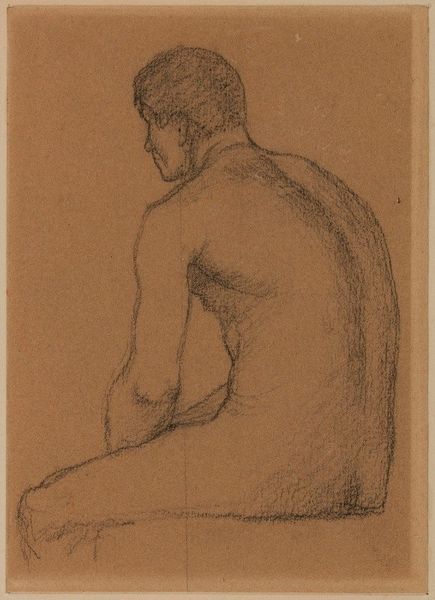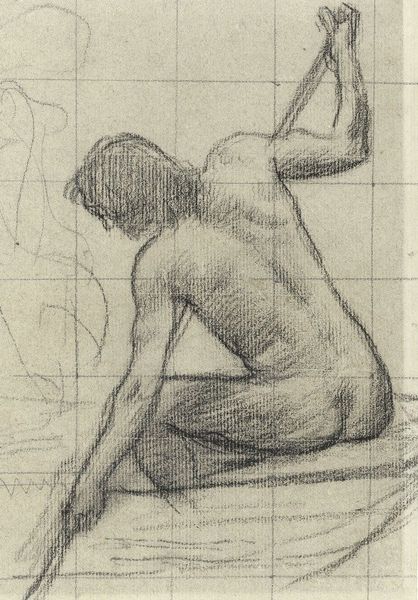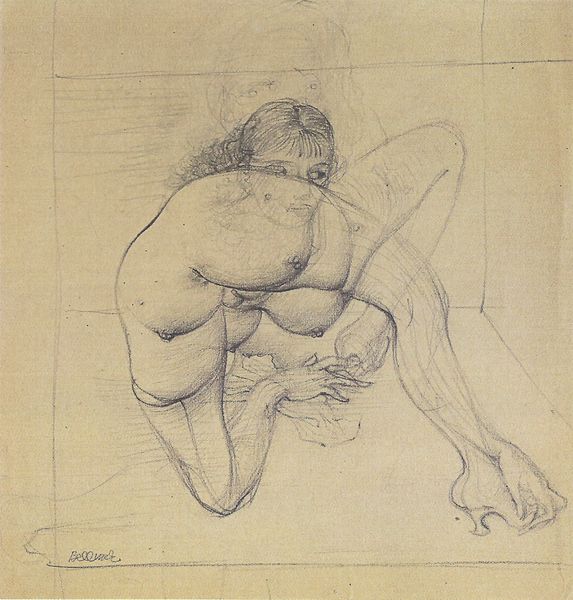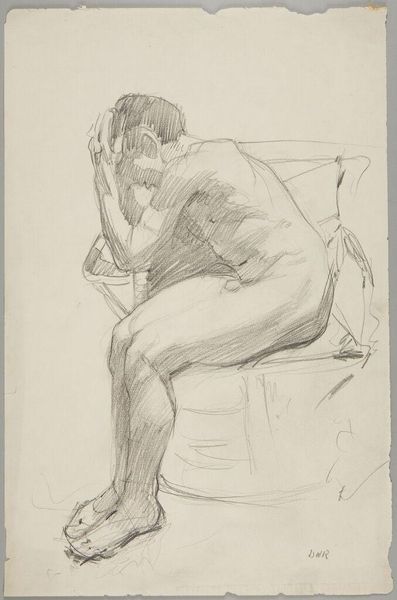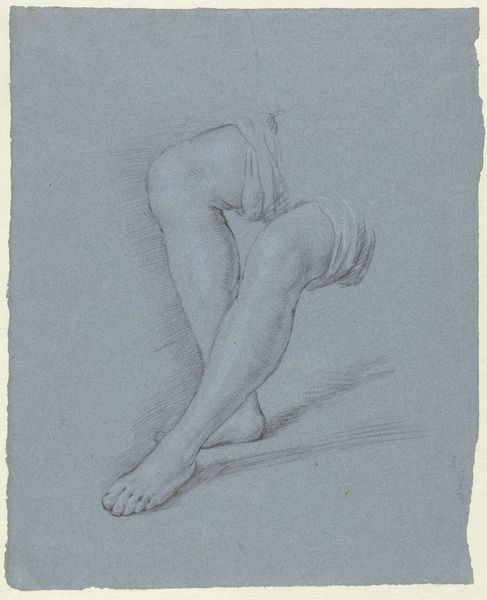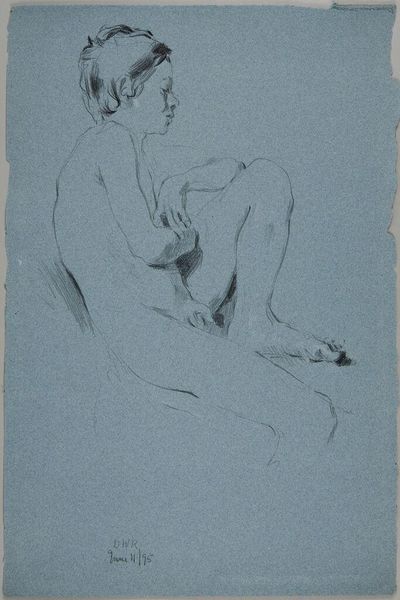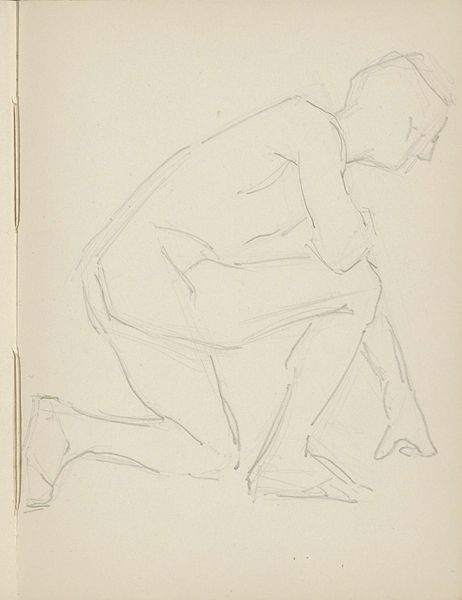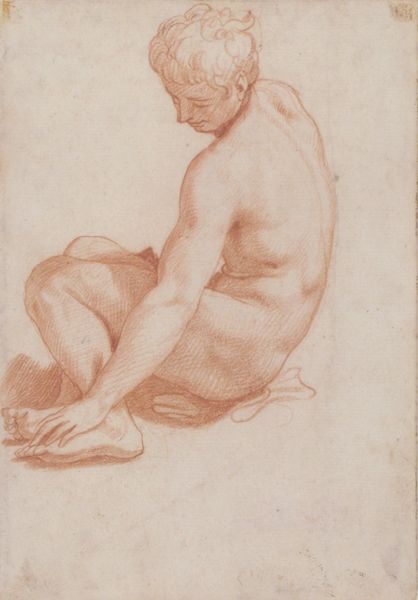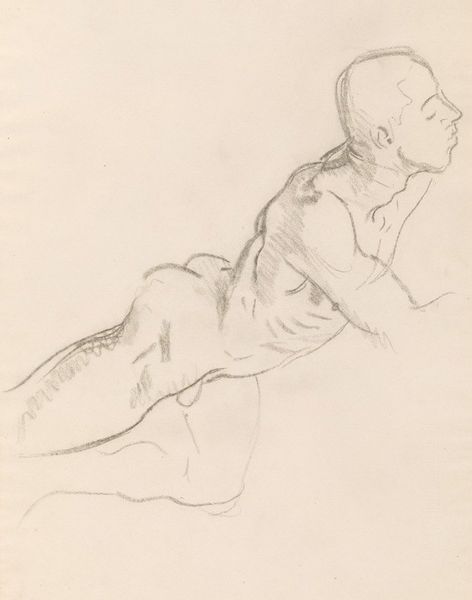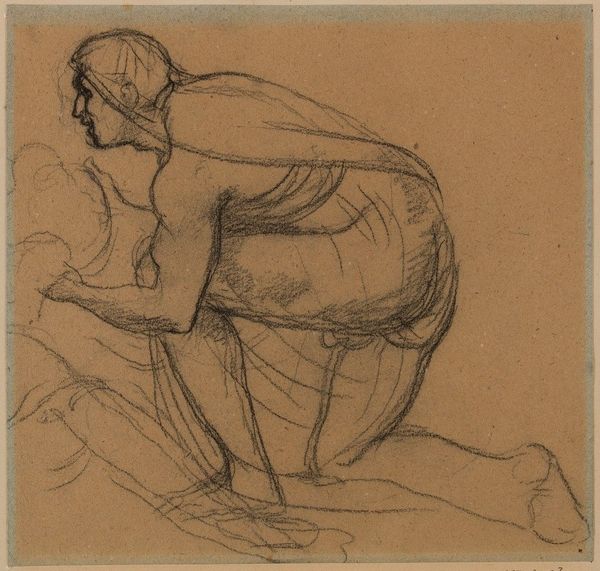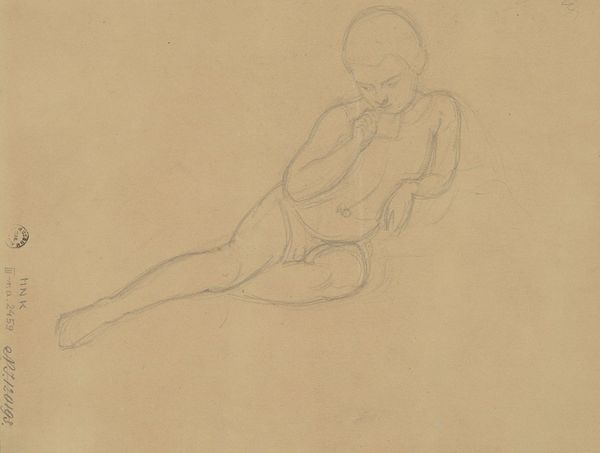
drawing, pencil
#
portrait
#
drawing
#
figuration
#
pencil drawing
#
pencil
#
portrait drawing
#
academic-art
#
realism
Copyright: Public Domain: Artvee
Curator: Here we have Helene Schjerfbeck's "Istuva alaston mies," created around 1877-1878. It's a pencil drawing. Editor: There’s a tentative quality to the lines, a seeking out of form in this figure. I'm struck by the pose – the man seems lost in thought, turned inward. Curator: Schjerfbeck was studying at the Academy during that period. The male nude was a standard subject of academic study, representing a key element of art education where students had to master human anatomy. What's interesting here is how Schjerfbeck seems to be imbuing the traditional subject matter with her individual artistic sensibility, through the softness of line and understated presentation. Editor: Yes, look how she uses the pencil – it is not just descriptive. See the areas of intense hatching around the legs? Those become almost sculptural. It's not just about depicting a nude, it's about exploring tonal variations, the textures that a pencil on paper can produce. It is pushing what is commonly regarded as a draft drawing to the territory of completed artwork, making use of very simple, affordable means to generate art. Curator: Right. It asks us to consider the labor inherent in artistic creation, even in what might appear to be a quick study. Consider the repetitive movements, the physical act of pressing pencil to paper. These academy practices were very class-oriented. Those who had the possibility to enter the academic system of education and training were predominantly the bourgeois that later turned into artists. Editor: And that repetition, that focused labor, allows for an in-depth engagement with the form. You can see it in the way the light falls – creating this delicate dance of light and shadow, volume and surface. Look how his head is blurred out, how the figure fades towards the background, while the contours of his torso are better marked to grab the observer's attention. Curator: By delving into the materiality of this drawing, its status as both study and artistic object becomes less contradictory. Editor: Indeed. It's a delicate balancing act of seeing and doing, embodied in these understated, tentative marks.
Comments
No comments
Be the first to comment and join the conversation on the ultimate creative platform.
